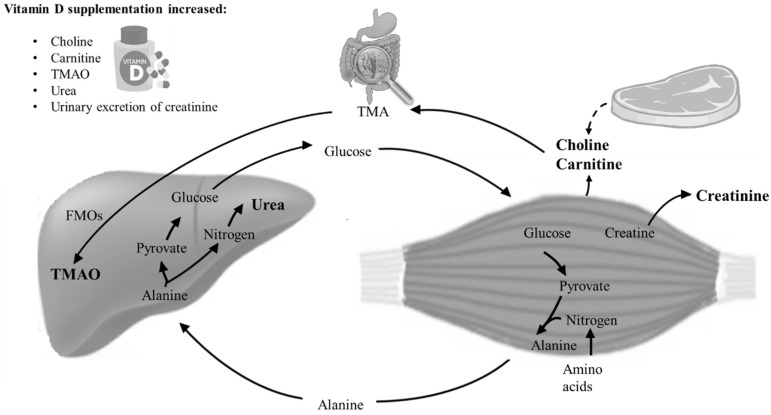Figure 2.
Schematic illustration of the metabolic pathways of the significant and border-significant findings on choline, carnitine, creatinine, TMAO, and urea. Choline and carnitine are nutrients normally ingested through protein-rich diets. TMAO is generated from the hepatic oxidation of trimethylamine (TMA), formed by the gut microbiota from carnitine and choline. In the body, high concentrations of choline and carnitine are present in skeletal muscle. In the glucose–alanine cycle, amino groups and carbons from skeletal muscle are transported to the liver. In the liver, alanine is converted to pyruvate and nitrogen. Nitrogen enters the urea cycle, and pyruvate is used to produce glucose [24]. Creatinine is a waste product of a non-enzymatic degradation of creatine phosphate, serving as a reserve of high-energy phosphates in skeletal muscle. Together with previous clinical findings on muscle strength and physical performance, the data suggest that the increase in choline, carnitine, creatinine, TMAO, and urea, all waste products originating from muscle catabolism, may be caused by a direct toxic effect on skeletal muscle.

